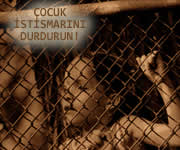
Well folks, here I am again with a new subject. It is about Slavery both in the East and West. Sorry, no pictures of concubines... :)
Both in the
East and in the
West, after the
Middle Ages, the concept of
slavery began to differ quietly than the old ages.
First of all, slaves were not seen only as a “
muscle power” machines. They were actually captives whose
ransom could be paid by their families and beloved ones, and the owner of the slaves could conduct a very profitable business. Yes, I called slaves as “
captives” but hopefully, this will not disorient you. They were captives, right. Yet neither in the
Muslim World or in
Christendom they did not worth more than mere a dog. Not as a Meta (they used to cost a lot sometimes) but as the receivers of respect.

It was true that slaves in the
Muslim World had some rights gained by the
Shari’a (Islamic Law). So, generally speaking, they were in a better condition. In the
Muslim World, one thing could change the fate of the slave:
Conversion. If a slave would be converted to
Islam, he would immediately have the same right of a free
Muslim in the very society and would have the opportunity to rise in the hierarchy.
On the other hand, the situation with the
Christendom is a bit different.
Infants and
women had a better treatment in the Christendom. They were seen as objects of joy and fun. But when they grew up, or their beauties diminished, they had the fate of a regular slave. The
dehumanization against an Ottoman P.O.W. was very high in Christendom. First of all, an
Ottoman Soldier was a
barbarian who flocked from the East to batter down the West. He was a heathen who was following the “
Blasphemous Sect of Mohammad”. It was also believed that Turks were the "
Slash of the God" (anyone remember Huns?) who had been sent to
Byzantium as Byzantium Empire separated their church from
Roman Catholic Church
. For the Muslims, Christians were heathens as well (how surprising?). They were worshiping three gods and blasphemously alleging that
Jesus Christ was the
son of the God! Of course there were so many common points among them but one point was more common than others. They were referring each other with the same word:
Dog!
Both the East and the West chroniclers used this word excessively. That point of view also lies beneath the
Martin Luther’s

naming of homosexuality. He named homosexuality as “
Hundehochzeit”, which means “
Marriage of dogs”.
Homosexuality was quite common in the Ottoman soil and was tolerated widely. Martin Luther was thinking that a sinful intercourse like homosexuality could only be linked to the blasphemous Turks, in other words “Dogs”.
As I said before, slaves were not treated humanely at neither sides. Sometimes our anachronistic perceptions really blur the vision of the past. One record tells us what happened in
Ferrara, a city in modern Italy, once upon a time. Our record tells us that one of the Ottoman P.O.W.s (A.k.a. "slave" in these days) had been beaten up to death in the middle of the main street when a group of P.O.W.s forced to march the streets to demonstrate the victory of the Christian Armies. After killing him they buried him. The governor of Ferrara took him out from his grave, cut his head and filled it with
straw. He put the slaves head on to display in the room he called “
Wunderkamer”.
On the other hand it is known that
Christendom was continuously in a shock as
Ottomans continued to cut the head of the soldiers they killed in battles, P.O.W.s and sometimes civilians who showed up at the wrong time and place.
 Decapitation
Decapitation was a very
barbaric act according to Christian Lands. It was carefully and systematically carried out by Ottoman Armies as mutilation of the body by tearing it apart, chopping the head off or cutting it into two means there would be no single grave for the enemy. This was very insulting for the Ottomans. That was the main reason for mutilations. Actually Ottomans did not invent this way of mutilation. Romans were the first ones who carried out this tradition widespread. Apparently, this Roman habit had been forgotten by Europeans of that age.
Slaves were allowed to write letters and send news to their families. In these letters they were -of course- asking their beloved ones to pay their
ransoms to their owners. Also, family members of the slaves were allowed to visit them; just to show the family that how poor the slave is! So that his/her family can hasten the process of gathering money for the ransom, to save the poor slave as soon as possible.
 Cartography was not supposed to be a very old discipline. But that is not true.
Cartography was not supposed to be a very old discipline. But that is not true.























































